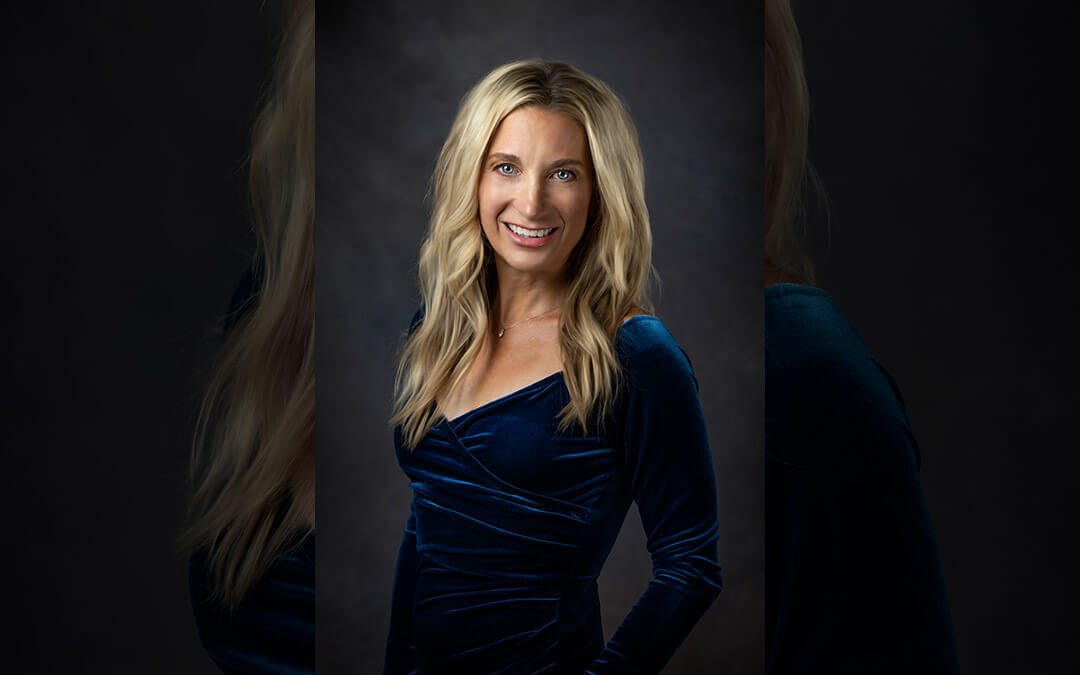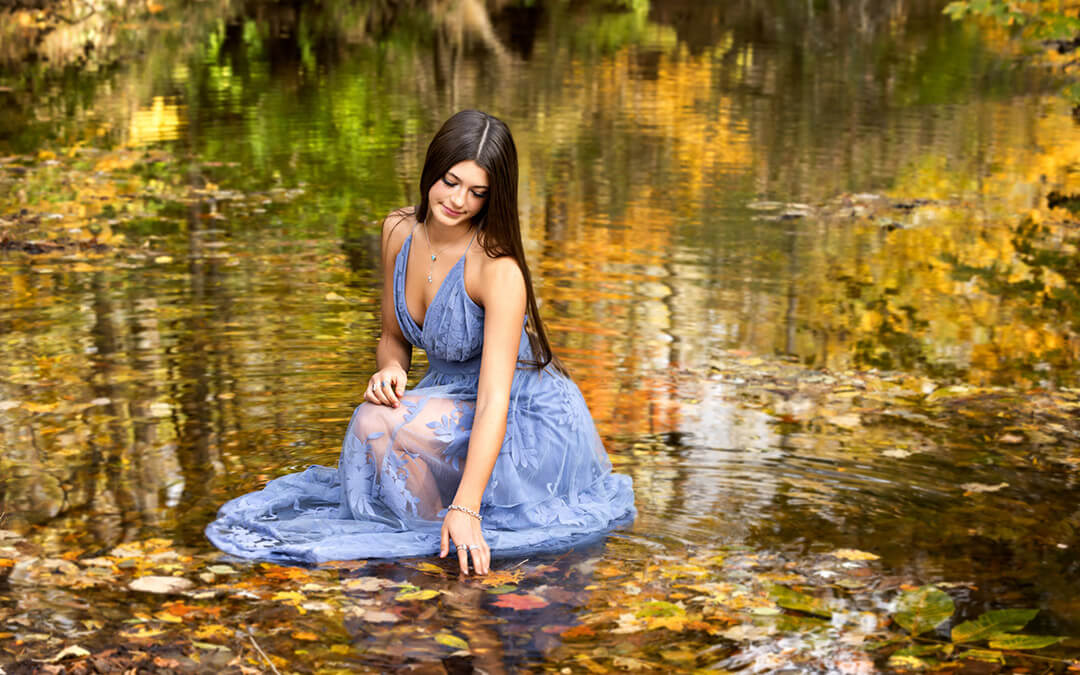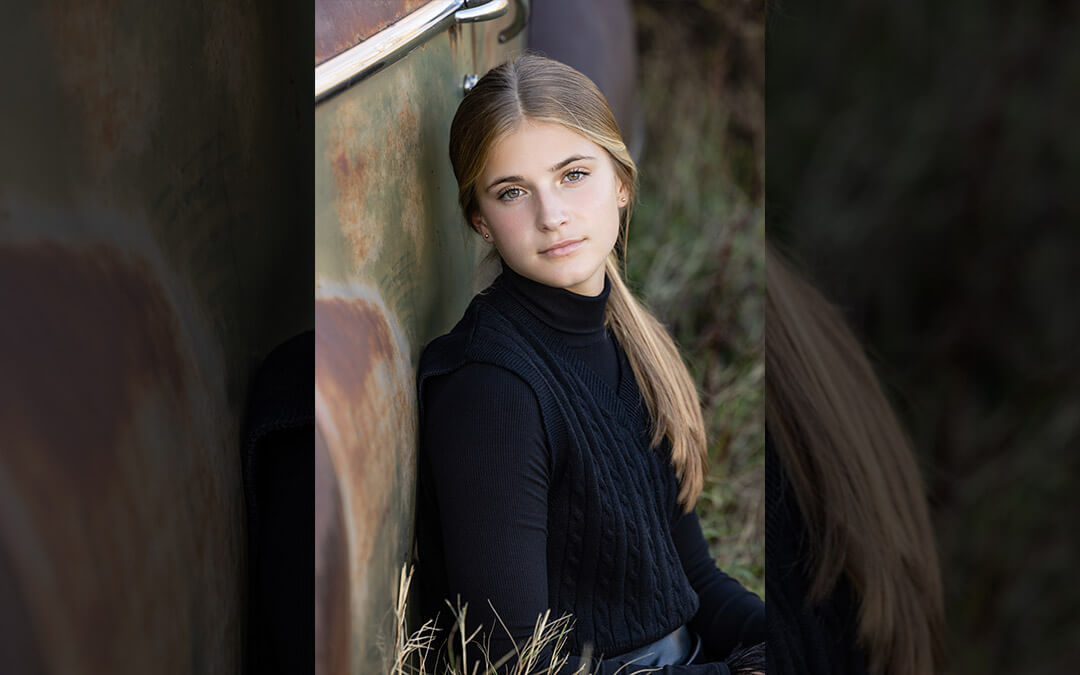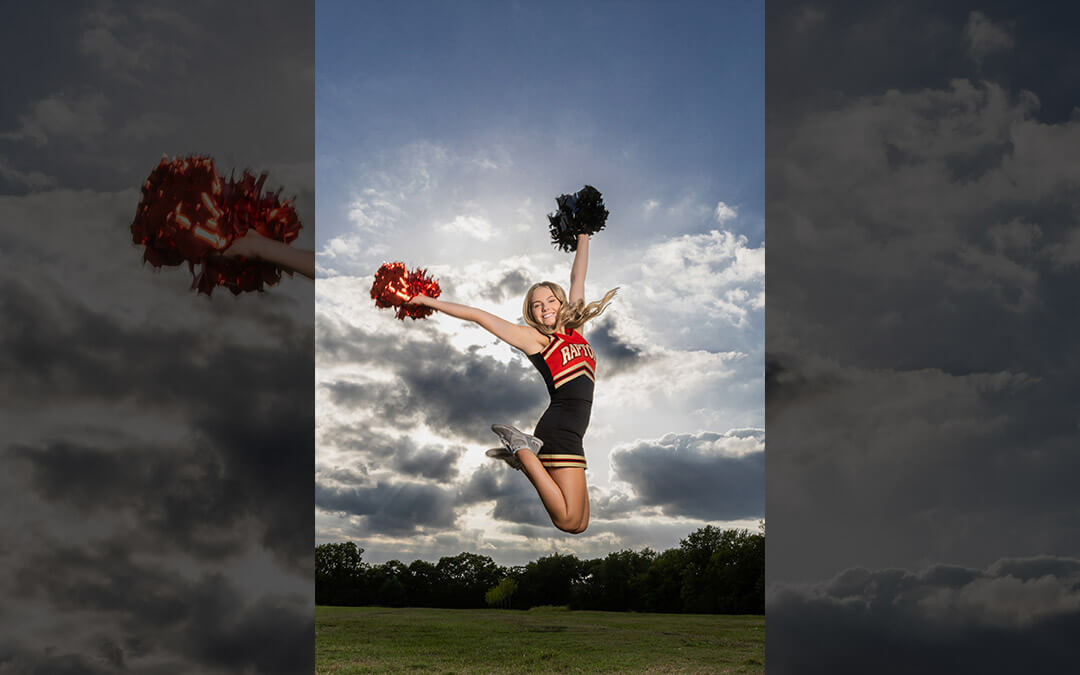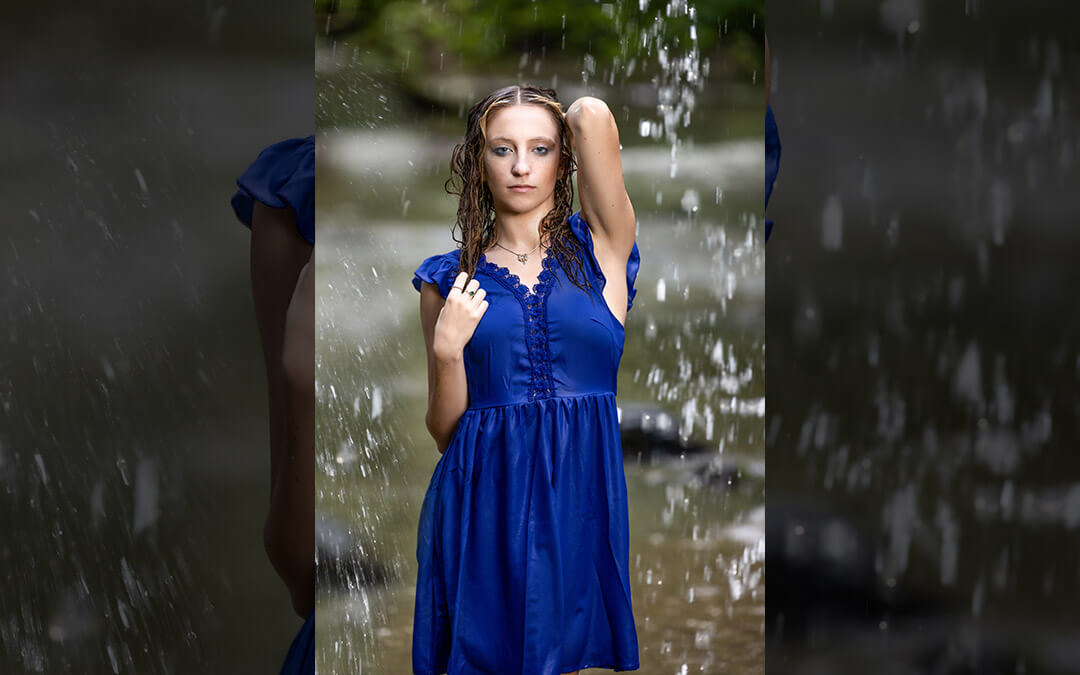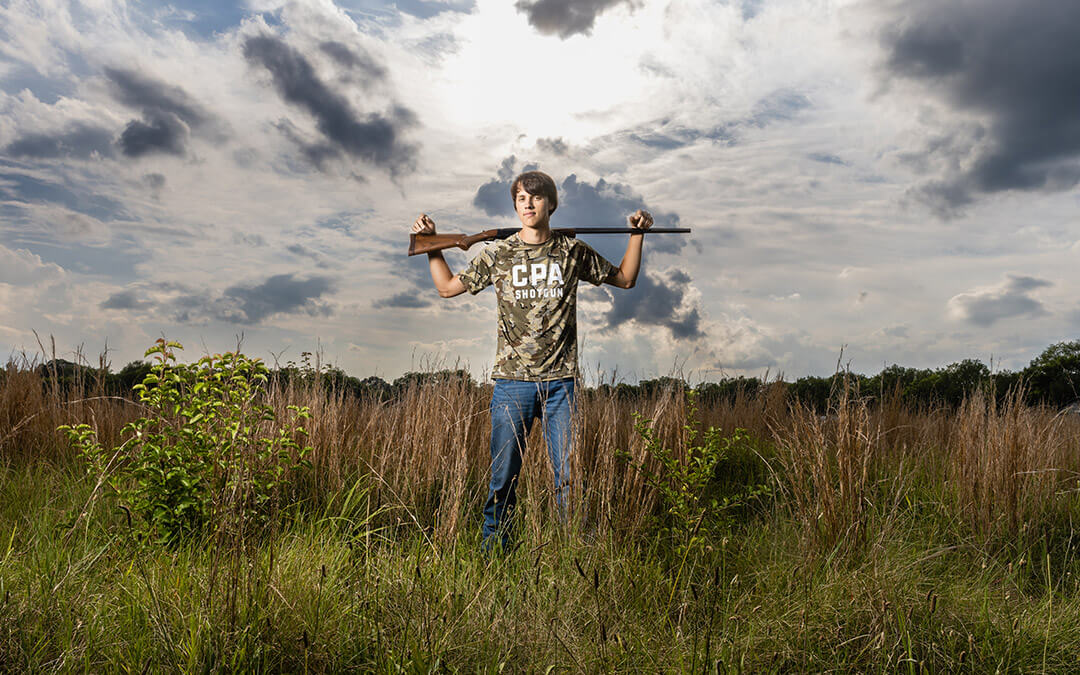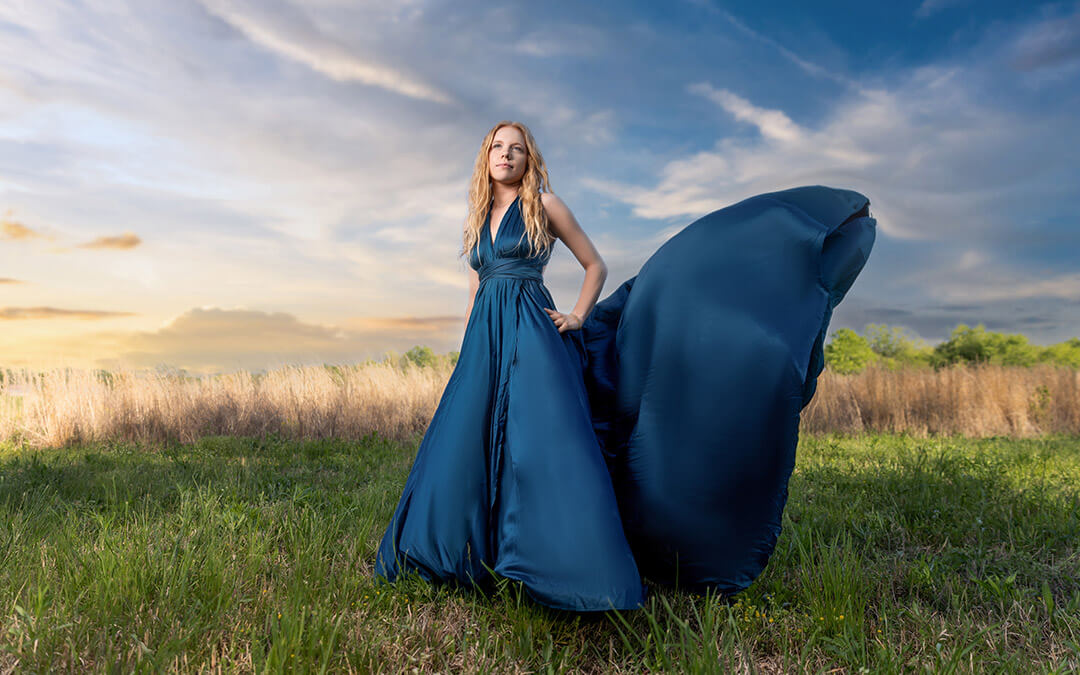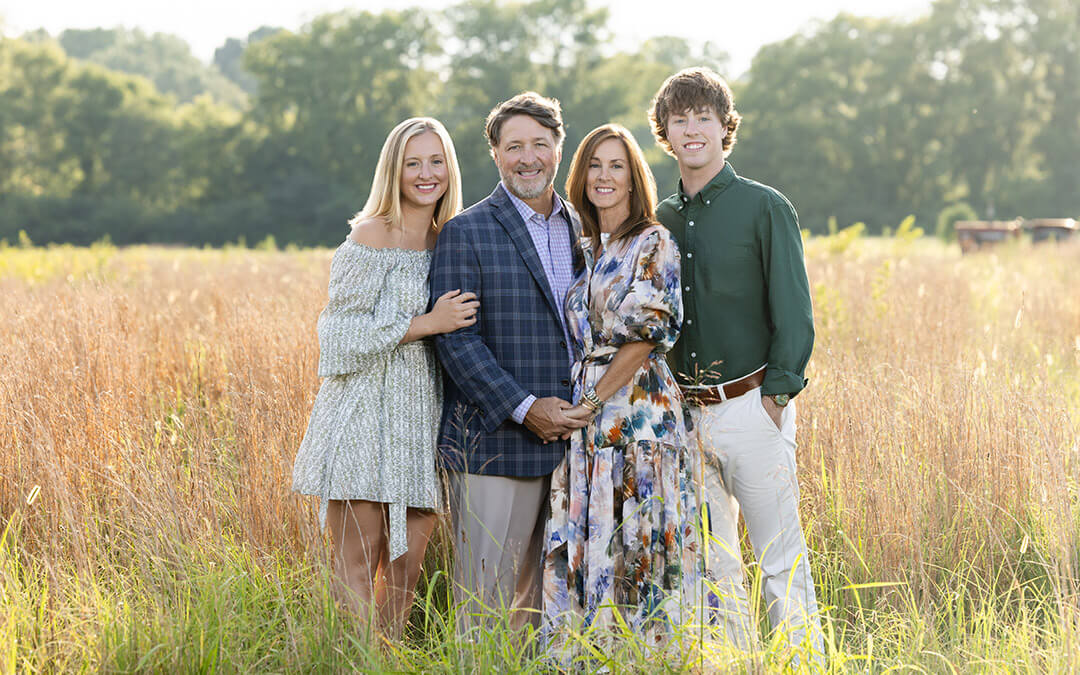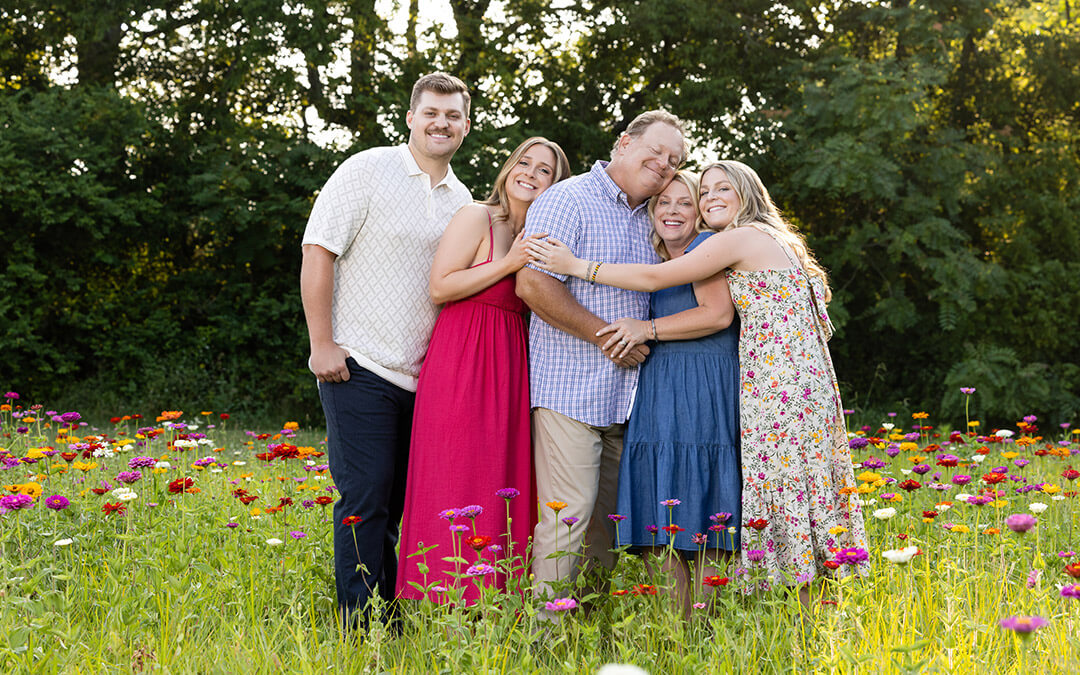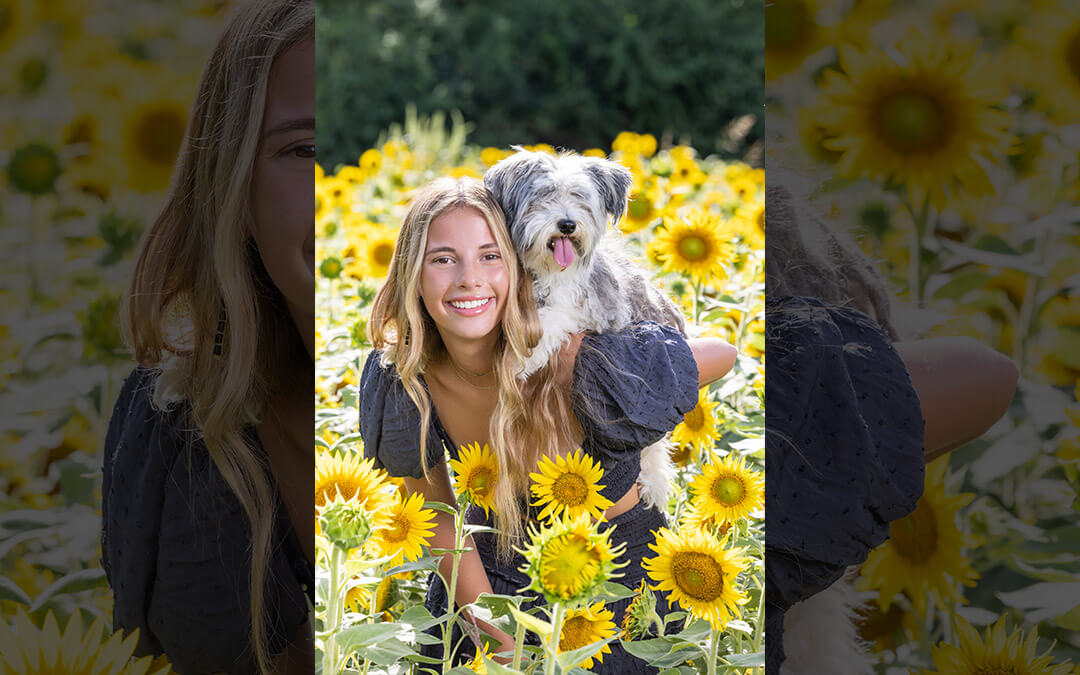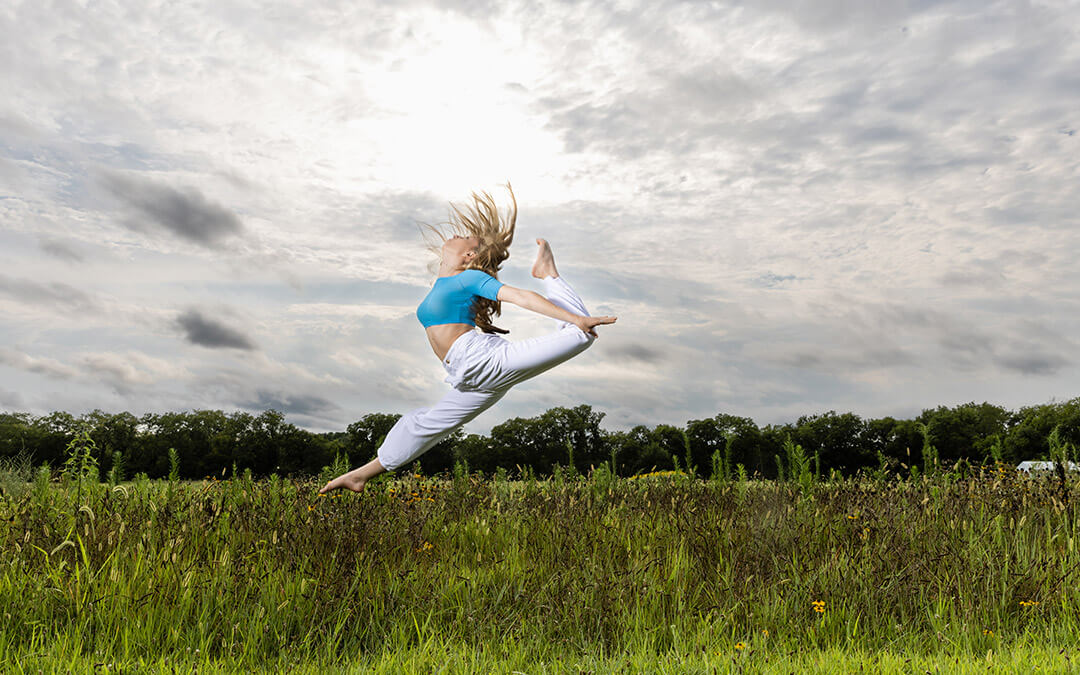Fall is senior PORTRAIT time in many areas of the country, and we think it’s a perfect opportunity to introduce a photographer who is becoming famous for taking a somewhat obligatory photo experience and elevating it to an original expression of a young adult’s identity. From dabbling as a child with equipment her father brought home from a job working for a photographer, Molly Boulay has developed into a true creative professional, revealing her subjects’ emotions and authenticity, and helping them find confidence in front of the camera! Join us as we discover how Molly’s initial curiosity in taking pictures has led to such a successful career, filled with happy clients and numerous accolades!
As a child, I just had some fun taking pictures. I went on to earn my Masters in history, got married, had children, but never really found my “thing.” I wanted a fulfilling career and to be home with my kids. Once we moved to Nashville, I got the opportunity to take a 2-week photography class, and it just felt right. A few classes later, and I became “the mom with the camera.” I took pictures of kids—friends’, neighbors,’ and my own—practicing the skills I had learned with my Canon Rebel.
Another fledgling photographer friend in Ohio mentioned the WPPI (Wedding & Portrait Photographers International) conference in Las Vegas, and we decided it was time to really get our feet wet! Digital photography was brand new, and we discovered that the photography world was huge. I invested in a ton of equipment which I took home to learn how to use. I attended one conference, then another; I studied under a few photographers, and then decided this was what I really wanted to do.
Many professionals speak about the shift from taking photos for fun and deciding to move into a professional role. Has there been anything specific which was a catalyst in your journey to making photography a career and not just a hobby?
I had been taking pictures professionally for a couple of years and went to another WPPI conference which included a business talk where a speaker compared being a professional photographer to having an expensive hobby. It really hit home, and I had to admit to myself (and her) that I was burned out in my “hobby”—spending hours at the computer, undercharging for my work, not taking any personal time for myself or my family—but not really making a living at it. After several intensive PPA (Professional Photographers of America) business sessions and guidance from experts, I made some critical changes. I raised my prices, established set days and hours, and outsourced some of the support tasks, leading to better (and happier) clients, more money, favorable working hours, additional time with my family, and a happier me!
What makes senior photography so challenging, yet so rewarding? Do you have a story to share about a unique photo shoot?
Teenagers have an innate ability to spot a fraud. I make every effort to connect with the seniors, dig deep to find out who they really are. I want them to have a positive experience, so I ask lots of questions about what matters to them.
I always start with a pre-shoot consult, so we can get a bit more comfortable with each other and determine what they want in their senior session. Many of the girls have some ideas, but often the boys say, “It’s for my mom.” Once we start talking, I uncover gems about them—sports, hobbies, a pet, a car, anything special to them—and just really listen to them. Once you reveal something they are passionate about, their smiles break through. I love seeing the boys really shine, and they are the clients most likely to greet me with a big hug years later when I run into them!
I had one interesting senior shoot with a skateboarder who didn’t play sports. As we talked about his interests, he confided in me that he loved going to thrift stores and repurposing clothes. I decided to start his senior shoot at Goodwill; it meant so much to him and I reminded him about how this was part of his story, something he will later enjoy sharing with his kids. It was so rewarding!
Your use of locations is exceptional—each one seems to bring out the unique personality of your subjects. How much work goes into selecting locations, backgrounds, even props, to highlight your subject’s authenticity?
I always start by asking my clients if they have thought about where they want to hold the photo shoot. More often the answer is “No,” so I delve into their personality: do you like urban or rural areas, are you more of a downtown, hustle & bustle type, are you interested in a specific historic or famous location, or do you feel a connection with nature? We can’t always take pictures where my clients may have an emotional attachment, so I show them albums with several options, looking for a spark of interest.
For those “fields & farm” types, I may suggest South 40. It offers a wide variety of options to please most clients. I recently had a senior picture client who was a skeet shooter. Many places would not allow him to take a gun, but South 40 allowed him to take his unloaded shotgun; we got some phenomenal pictures which really revealed his passion and personality.
We all understand Murphy’s Law, and when taking photos, I can imagine it comes into play more often than you care to count. How much flexibility is necessary for photo shoots? Was there a specific incident early in your career when you truly needed a Plan B?
When working with both humans and equipment, anything can happen, so I believe in redundancy and preparation for the inevitable. I can’t forget a shoot where Murphy’s Law truly applied—my flashes simply would not work. Luckily, the conditions were favorable for me to shoot in natural light, and I pretended like nothing was wrong. To offset the lack of flashes, I simply used a reflector to bounce light from a nearby building. Even though I didn’t capture the beautiful sky photos I had planned on, the client never knew there was an issue, and we took some gorgeous photos. This is why taking classes and having tools available at every shoot is important…and always have backups!
You offer a wardrobe of outfits for your “Fine Art” sessions—how did this idea develop and what types of clients take advantage of this experience? How do you market this type of photography?
About 5 years ago, I was inspired to develop my fine art sessions while studying with other photographers. One should always study the work of professionals you admire, and I was excited by portrait-style photos taken by other professionals. Further, I live in a historic area, teeming with extravagant historic mansions, many displaying elegant old portraits of past residents. I wanted to create something timeless like the paintings hanging on those walls, something that anyone can enjoy. I learned from others who specialize in this type of work, and I recently launched Boulay Fine Art Portraiture.
You have captured sports & action shots like a professional sport photographer—how do you build this artistic expression, and what specific pieces of equipment do you use to capture movement?
Creating an action shot is different, and I saw sports photography as a challenge. As a lifelong athlete myself, I always appreciated seeing myself in movement, and recognized this as something unique I could offer my clients. For senior pictures, boys especially come alive when they have the chance to show off their sport or athletic hobby. To produce action shots, you really need professional equipment. High quality lights are a game changer and really make it possible, along with shooting on high speed sync and utilizing quality, fast lenses.
You expand your market by offering both location and studio photography. Was there a time in your career that you worked without a studio, and how did you build that portion of your business?
There is value in both studio and location photography; in the studio, you have control of the lighting. This is important for fine art, business-focused, and images where you need tight control. However, outdoor shoots provide my clients with a variety of backgrounds to choose from, but along with that comes the uncertainty of lighting and conditions. It is important to my clientele that I offer multiple options for their photography needs.
South 40 offers photographers a wide variety of options for shoots in a single location. How did you hear about South 40 and what are your favorite spots there?
I saw a fellow photographer sharing photos taken at this amazing place, and I had to know where she took them. I reached out to Ann, and it seemed like a great fit for me and my clients. Some client favorites are the white room, especially for the girls! I must mention that Jeff is an amazing gardener and keeps the flowers looking great all season long for field pictures—he grows a variety of colors and understands seasonality, ensuring there is something blooming from spring through fall. The other location clients love the most is the creek. It is easy to access and gorgeous in every season. Many clients want to put their feet in the water and one specific client wanted to get all the way IN it—even as far as to wanting buckets of water poured on her! That was definitely a unique shoot!
In any creative industry, awards are an acknowledgment that your peers—and not just your clients–recognize your work. What are some of the awards you have earned and what do they mean to you as a professional?
I started entering photography competitions about 8 years ago. It was difficult at first, as I am sensitive to criticism, and it can feel defeating to any photographer to learn you didn’t score well in a competition. However, I had a love-hate relationship with competitions because even though I disliked hearing harsh criticism, I knew it would help me improve my quality. I started reaching out to mentors, asking for feedback, and looking for assistance. I want to be clear by saying that anything I have won has been on the backs of the professionals who helped me with their knowledge and input. As far as the biggest accomplishment I have achieved, I would say that earning my Master of Photography Degree is what I am most proud of. This is a multi-year process, and involves both print competition and education merits, and a goal I had been dreaming about for many years.
Since you have personally benefited from professional advice in the photography industry, how do you pay it forward?
Although I am certainly not at the level of those who helped me in competitions, I do offer feedback for my peers and anyone who asks for my advice. In addition, high school kids have asked to shadow me when they want to explore a career in photography. I share my experience with them and suggest that they focus on earning a degree in business, with a minor in photography. Being a photographer is fun and challenging, but running a photography business takes tremendous effort and knowledge!
Connect with Molly:

